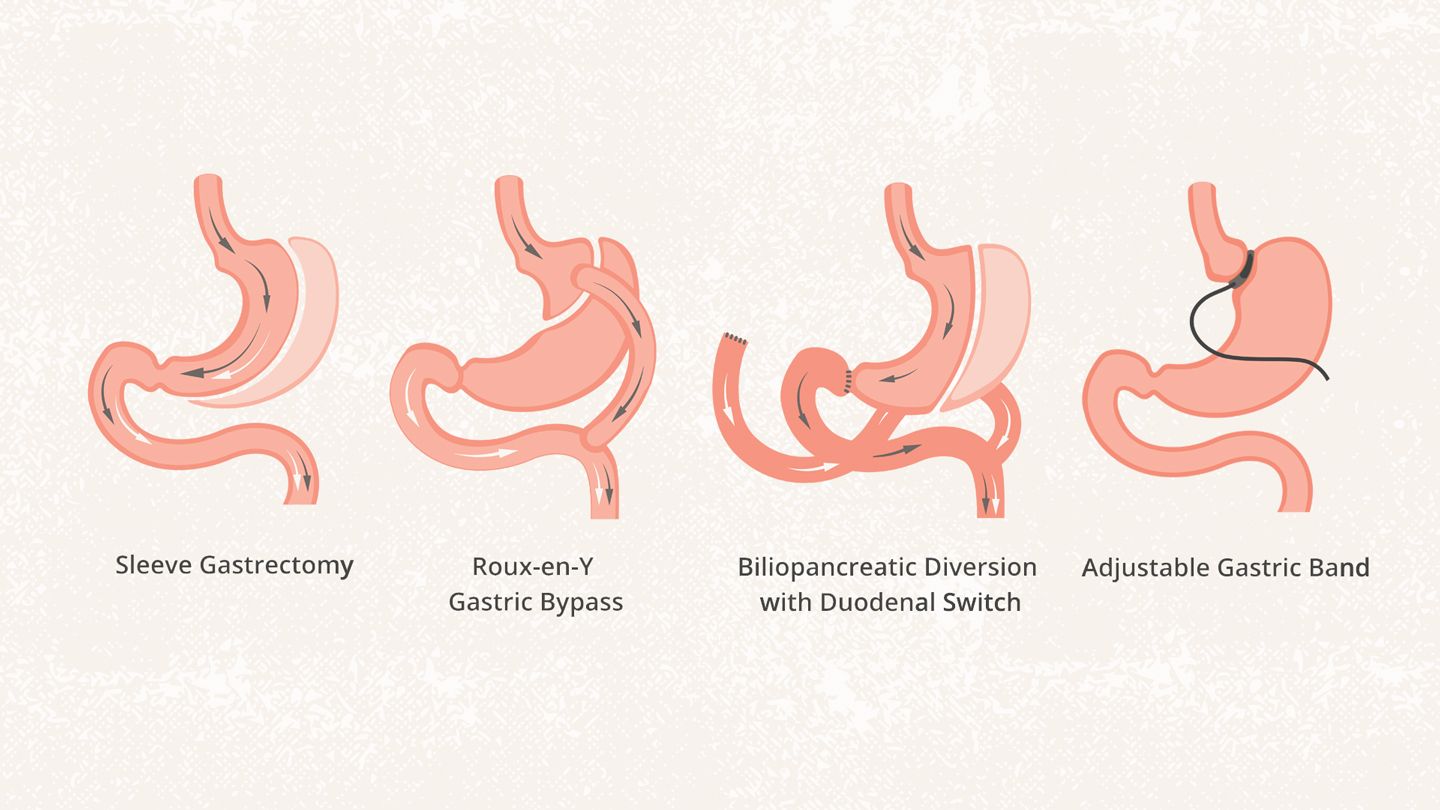Each surgery type has pros and cons to discuss with your doctor. “Each provides different average weight loss results and potential side effects or risks,” says Ellen Morrow, MD, an assistant professor and surgeon at the University of Utah Health who is certified in bariatric surgery.
“In general, it seems like the risk of a procedure sort of parallels the benefits,” she adds. “A sleeve gastrectomy, for example, may have a little bit less risk in some ways but results in a little bit less weight loss, while a duodenal switch may have potentially more long-term complications but also has the most significant weight loss results.”
Gastric Bypass
A Roux-en-Y gastric bypass is also known simply as a gastric bypass. “Roux-en-Y” is French for “in the form of a Y.” This procedure is a common choice in the United States.
“My colleagues and I here at the University of Utah perform Roux-en-Y gastric bypass the most, which is kind of considered the gold standard,” says Dr. Morrow. In this procedure, the surgeon separates the stomach into a top and bottom section.
The top section — also called a pouch — is roughly the size of an egg, and the bottom section no longer digests food. The surgeon then connects a part of the small intestine called the Roux limb to the new stomach pouch.
“The Roux-en-Y gastric bypass works through malabsorption, so for this procedure there is some intestinal rearrangement as well to alter your body’s hormonal response to food, which is important,” says Morrow.
Sleeve Gastrectomy
This option is the most popular kind of bariatric surgery. “Sleeve gastrectomy is currently the most commonly performed procedure nationwide,” says Morrow.
“Bariatric procedures generally work in one of two ways, or sometimes both,” explains Morrow. “The first way is with restriction. All bariatric procedures have altered the stomach to try to make people have a smaller stomach and feel fuller,” she says.
“A sleeve gastrectomy works purely through restriction, so we’re creating a smaller stomach by removing about two-thirds of the stomach.” A sleeve gastrectomy is the simplest of the procedures and doesn’t require as much time on the operating table. “It takes approximately an hour to perform,” says Morrow.
Duodenal Switch
Biliopancreatic diversion with a duodenal switch is often called a duodenal switch. “A duodenal switch involves a bit more malabsorption [compared with the gastric bypass],” says Morrow.
While a specific diet is crucial for everyone who undergoes bariatric surgery, following eating guidelines closely is necessary for people who have a duodenal switch.
“They have to be really careful about eating enough protein, or else they can become deficient, and drinking enough water so they don’t get dehydrated. Plus, they must take vitamins daily, often more than once a day, depending on which vitamin supplements they choose,” says Morrow.
Read the full article here




